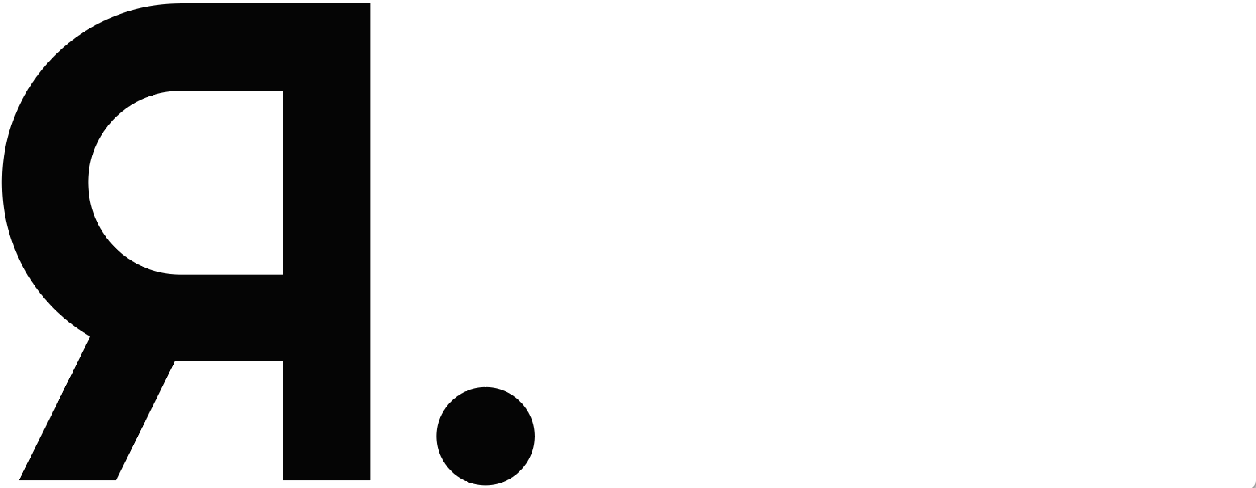Design Thinking
I used the Standford d. school design thinking process approaching this project. The process consists of the steps “empathise”, “define”, “brainstorm”, “prototyping” and “testing”.
To empathise with the users I issued gathered secondary data from Visit Norway and The Norwegian Bureau of Statistics.
To empathise with the users I issued gathered secondary data from Visit Norway and The Norwegian Bureau of Statistics.
On the basis of this data I defined the target group.
During the brainstorming phase I drew sketches by hand and from there I developed wireframes and prototypes. From there I conducted a round of user tests.
During the brainstorming phase I drew sketches by hand and from there I developed wireframes and prototypes. From there I conducted a round of user tests.
User insight
From the secondary data gathered from Visit Norway and Statistikknett / SSB, I learned the following:
· Foreign nationals that holiday in Norway spend an average of 10.8 nights in the country. Only 20% of their allotted time is spent in the capital.
· There is a general gender balance among the tourists with 48 % identifying as women and 52 % identifying as men. This it was also the case among all the nationalities +/– 8 %.
· 47 % travelled solo compared to 37 % travelling in pairs.
· Only 15 % travelled with children under the age of 17.
· Foreign nationals that holiday in Norway spend an average of 10.8 nights in the country. Only 20% of their allotted time is spent in the capital.
· There is a general gender balance among the tourists with 48 % identifying as women and 52 % identifying as men. This it was also the case among all the nationalities +/– 8 %.
· 47 % travelled solo compared to 37 % travelling in pairs.
· Only 15 % travelled with children under the age of 17.
What is type of experiences are they most interested in while they are here?
To the right is an overview of the participants interests with corresponding scores on a scale from 1 – 3, where 1 equals "not important", 2 equals "somewhat important" and 3 equals "very important" (in descending order)
To the right is an overview of the participants interests with corresponding scores on a scale from 1 – 3, where 1 equals "not important", 2 equals "somewhat important" and 3 equals "very important" (in descending order)
Overview of the participants’ interests in
experiences whilst in Oslo.
Target group
From the data collected I defined the following target groups:
Primary target group: Foreign nationals. They mostly travel solo or in pairs, without children and not as part of a guided group. Has steady income (full-time jobs), tight schedules and want to take full advantage of the time they have available. Approx. age 26 - 55.
Primary target group: Foreign nationals. They mostly travel solo or in pairs, without children and not as part of a guided group. Has steady income (full-time jobs), tight schedules and want to take full advantage of the time they have available. Approx. age 26 - 55.
Secondary target group: Backpackers, pensioners, families. Foreign nationals as well as Norwegians. Have some more time to spend in the city, have a rough idea of what they want to see and visit but are also looking for / open to suggestions. Approx. age 18 - 70+.
Sketches and design development
After drawing up analogue sketches and deciding which to go for from there I made a clickable digital sketch in Figma which I used in my first set of user testing. Here I worked on organisation, general layout, and placement of components.
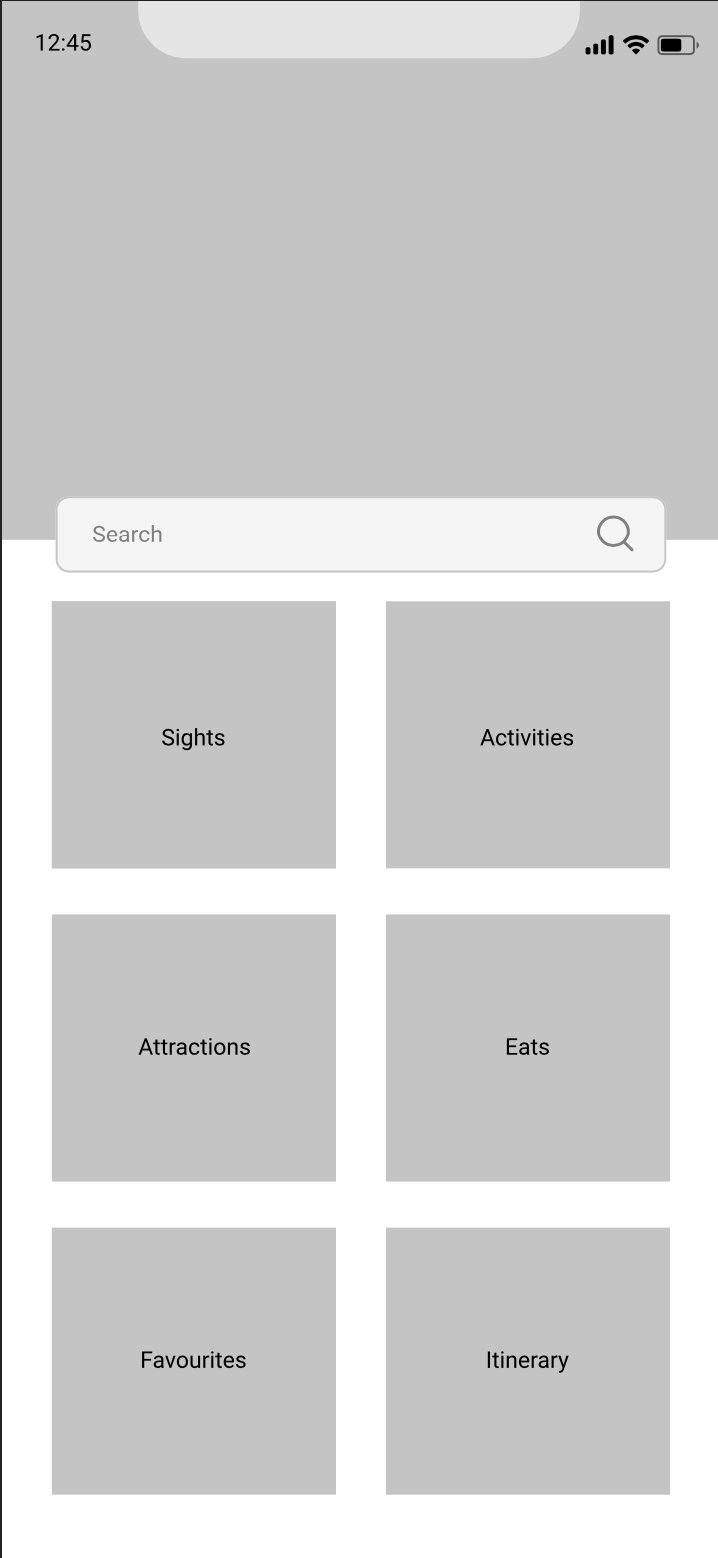

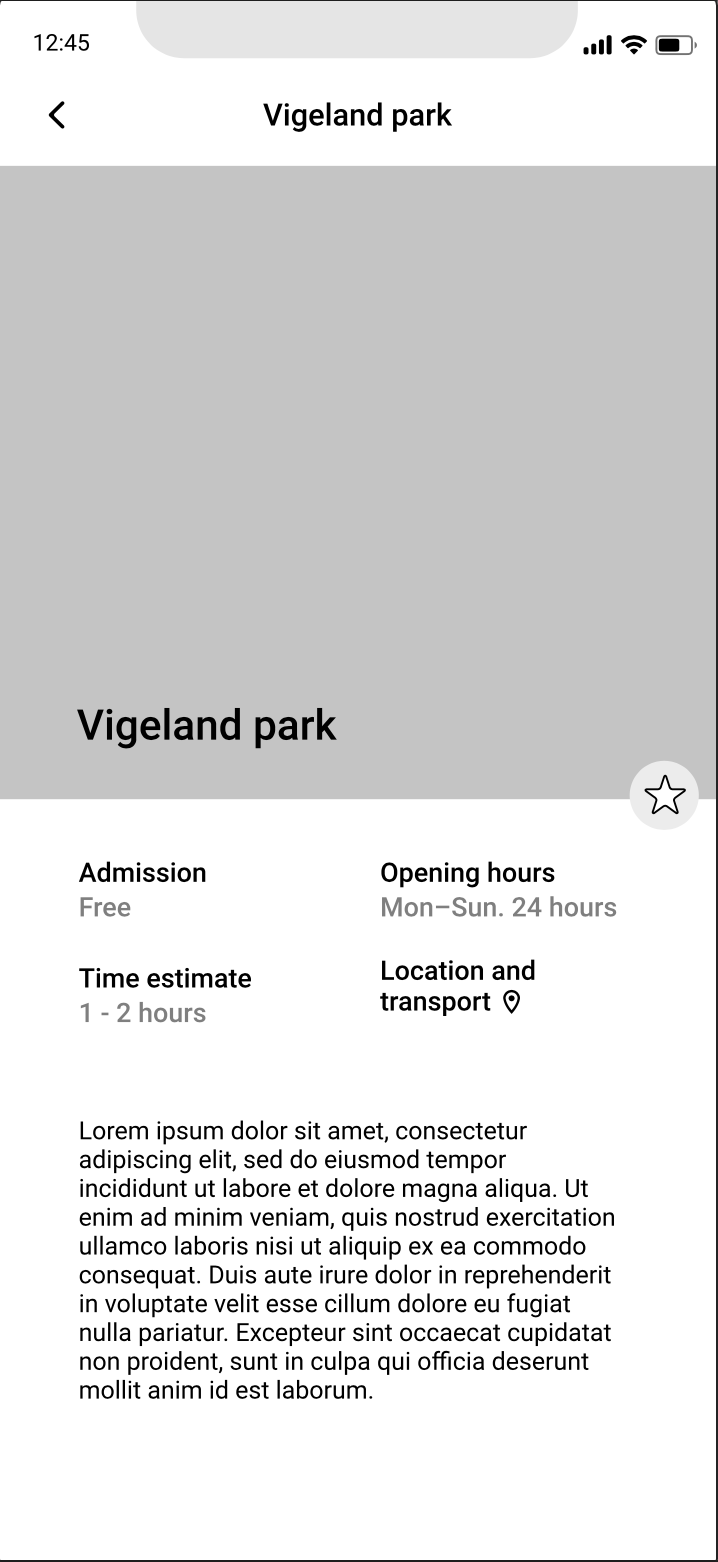
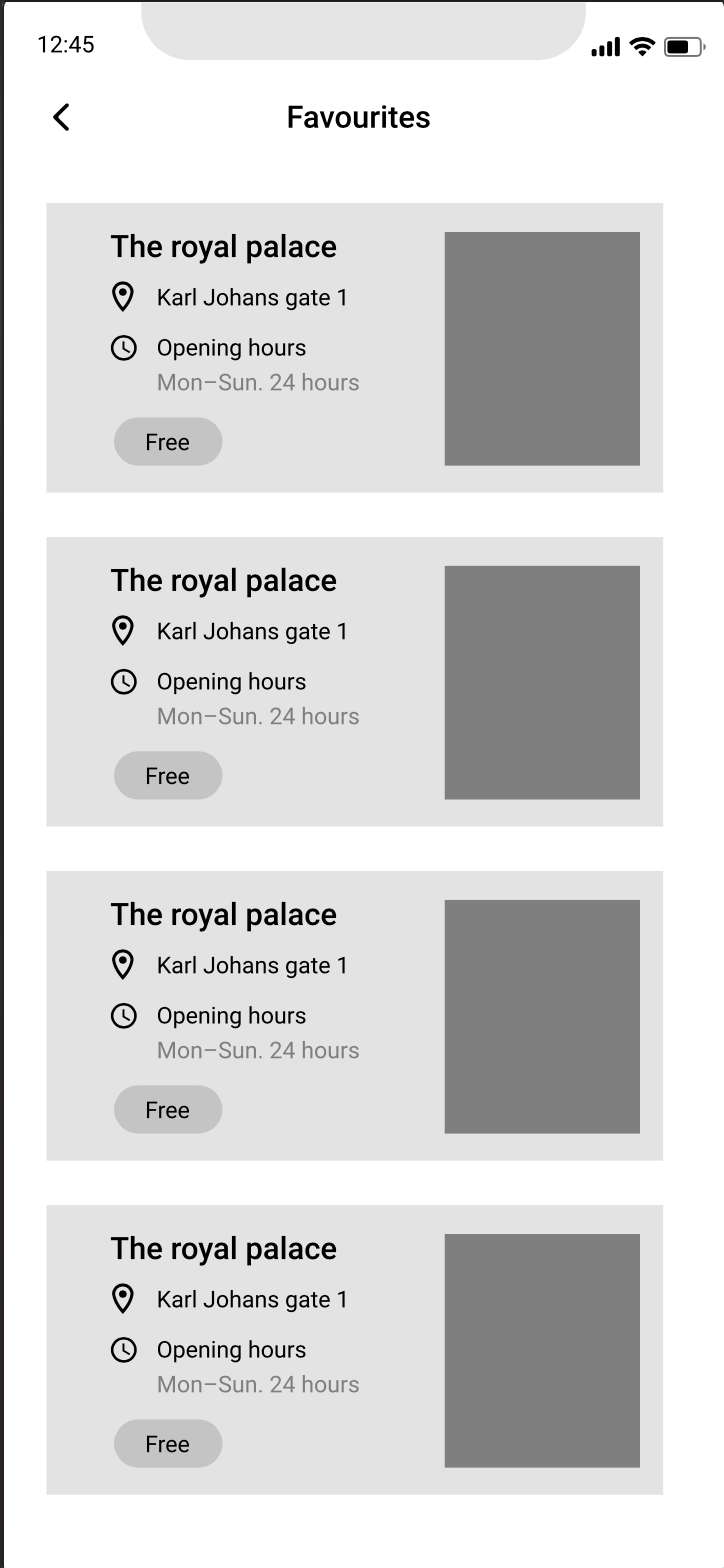
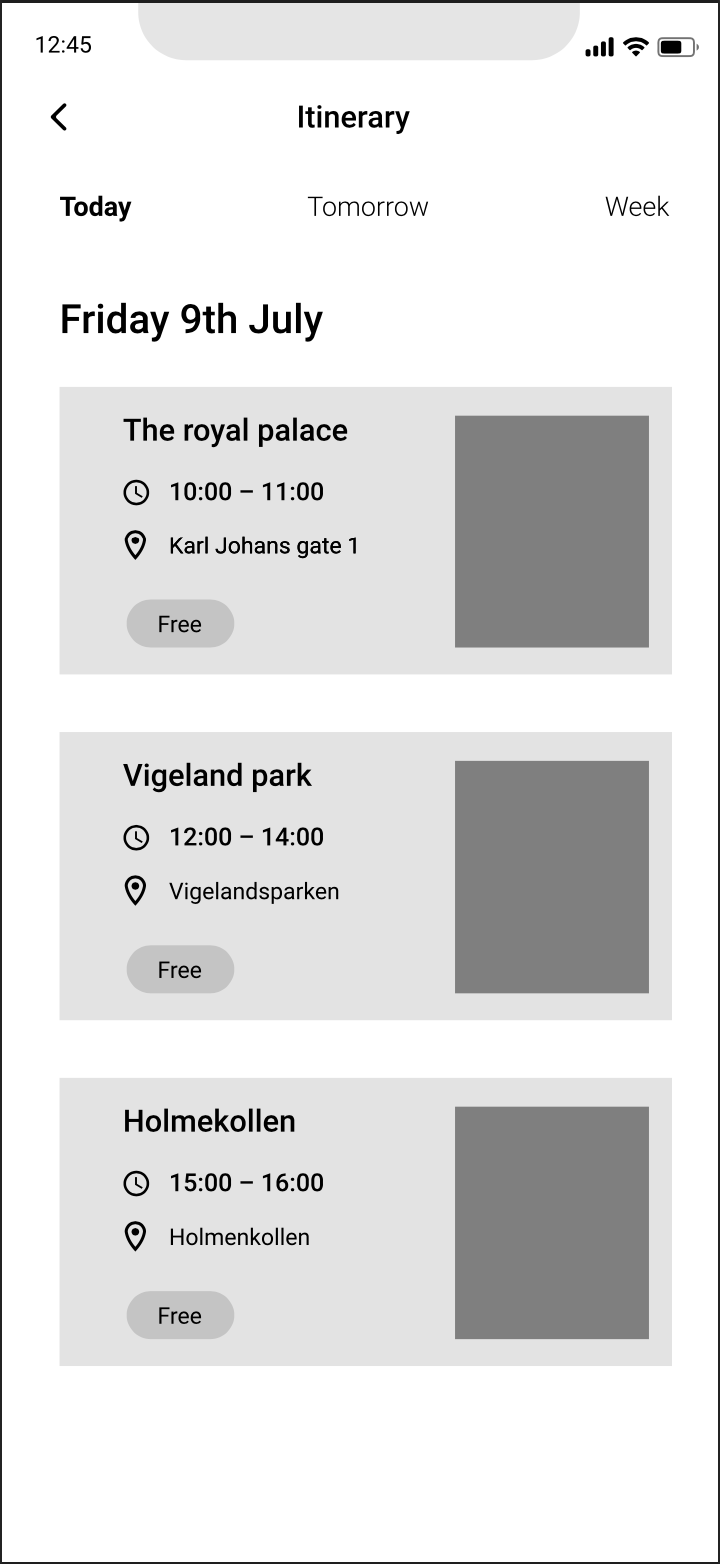

Accessibility
To achieve accessibility for all I have worked on the different levels in the text, and the colour grading within the app using the tool Color Contrast Analyser (CCA).
Here you can see examples of the colours gone through the CCA, and the usage of text levels:
Here you can see examples of the colours gone through the CCA, and the usage of text levels:
Information architecture
Final prototype
At this stage I added colours and illustrations to the design. The final prototype was developed over a couple of iterations based on the data from the user tests for bettering the application's usability, while also working to ensure accessibility.
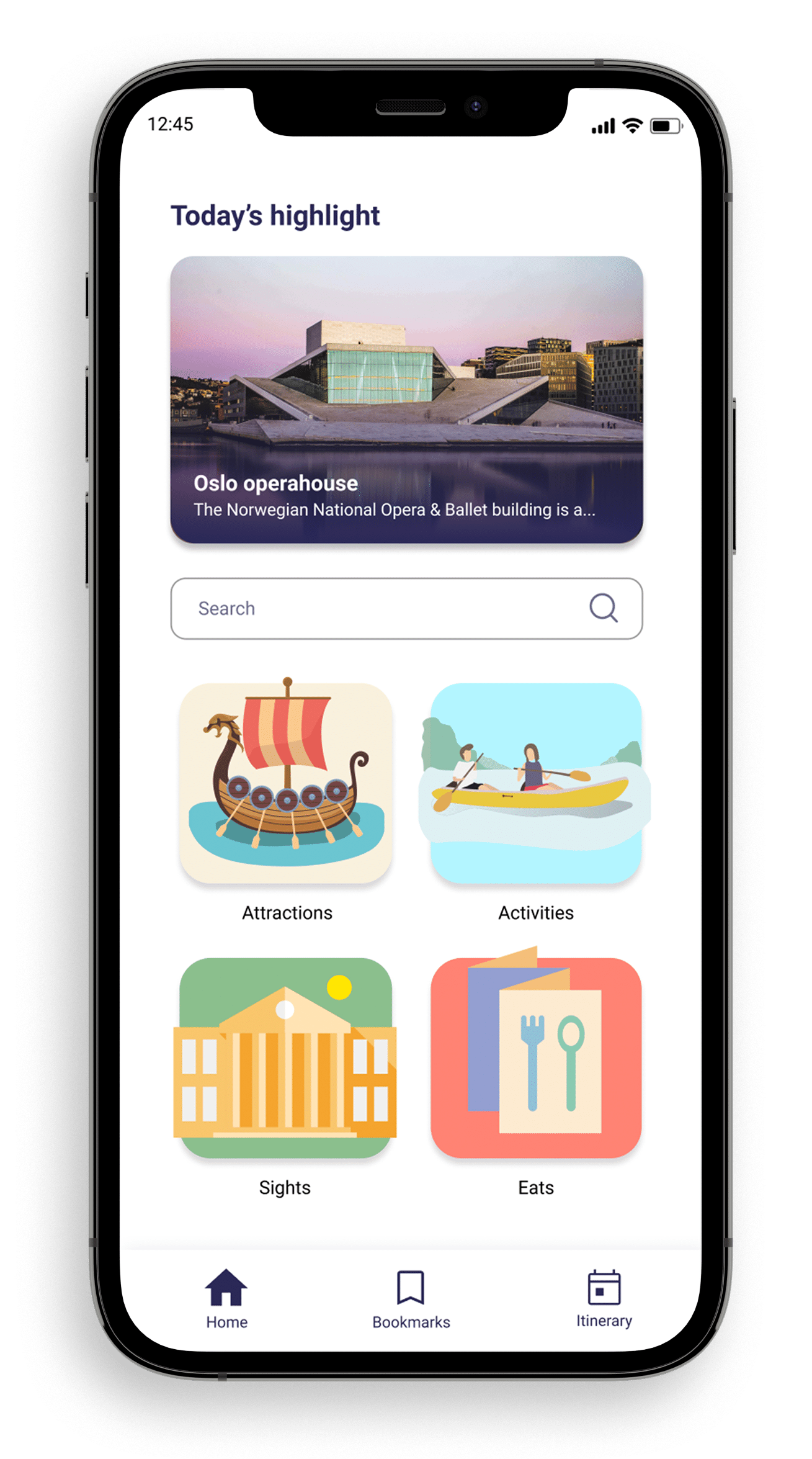
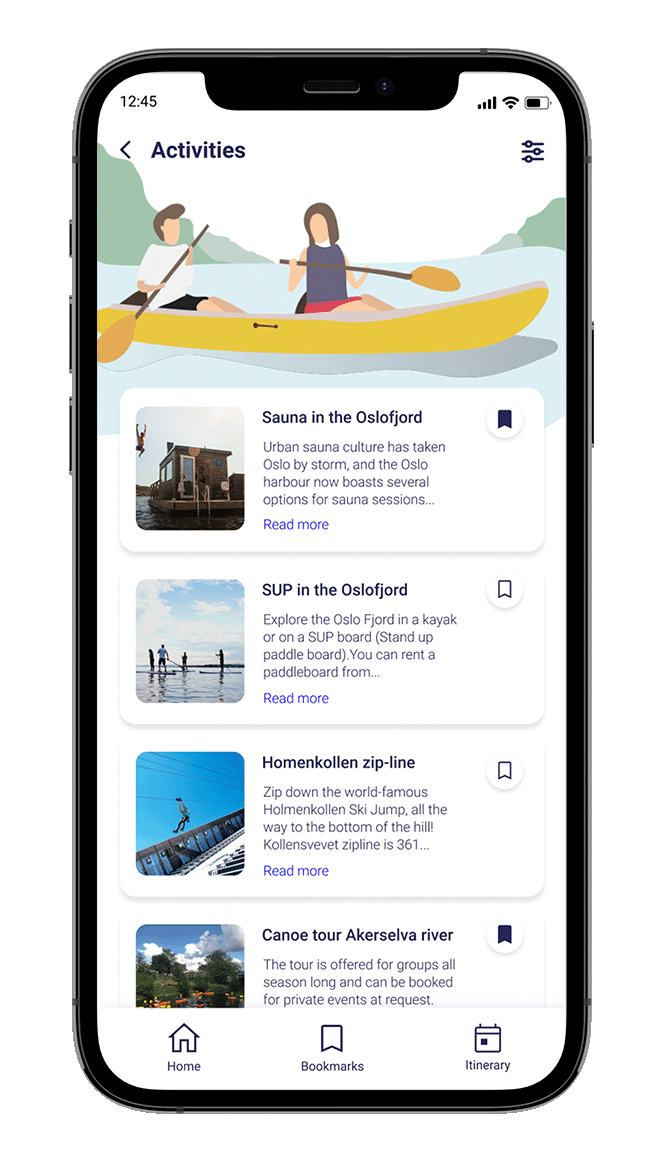
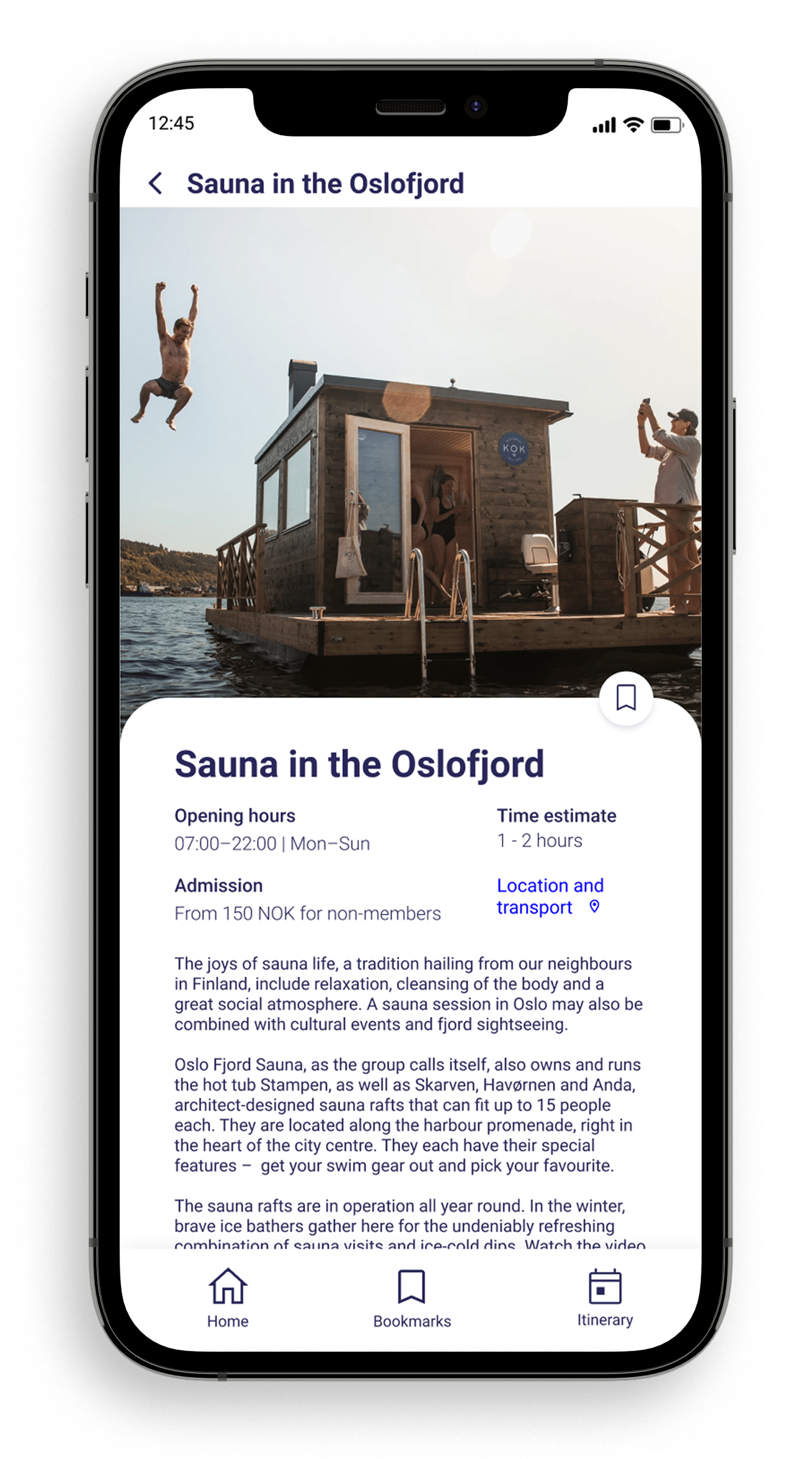


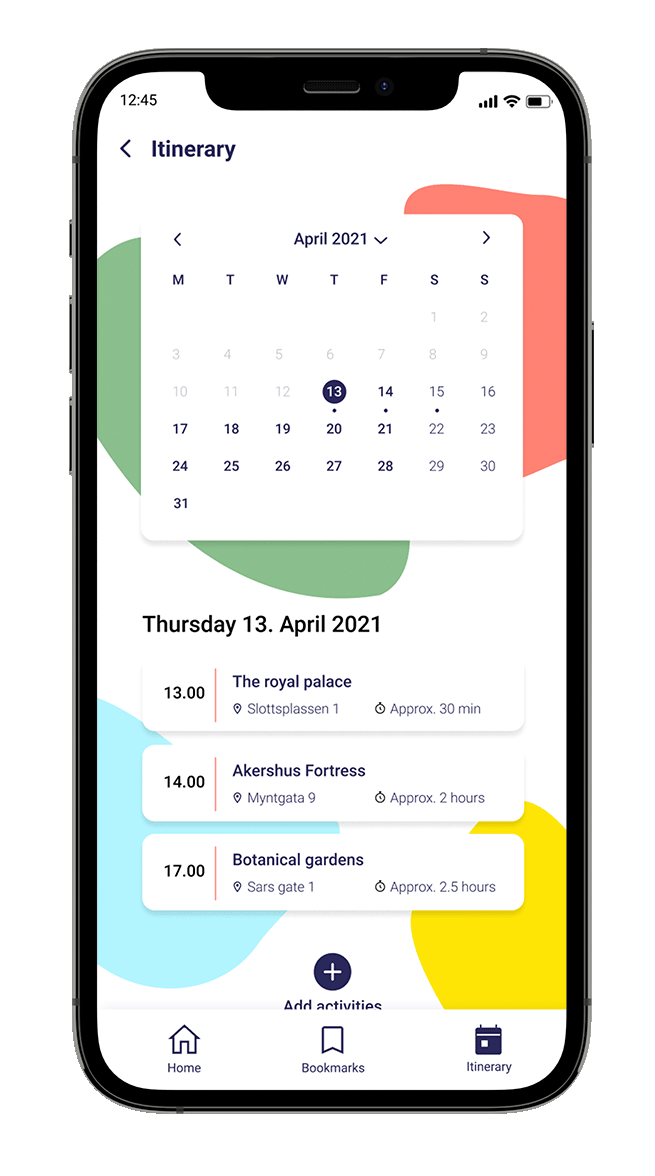
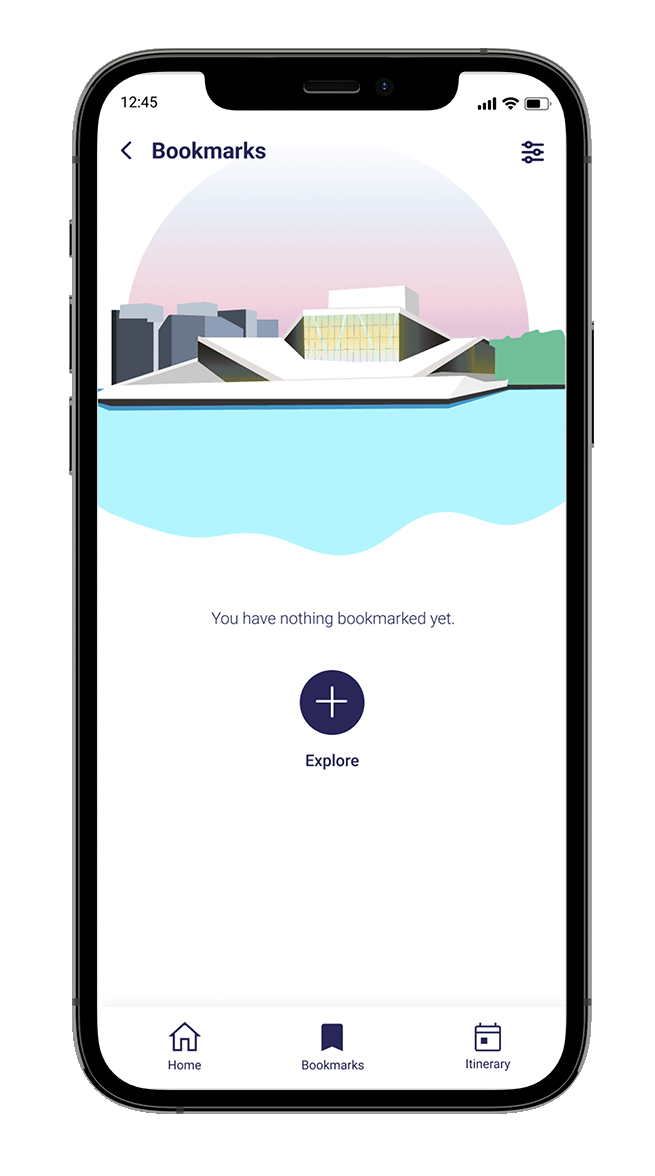

What have I learned from working solo on a project?
This was my first ever solo self initiated project and it has taught me so much about myself on both a professional and personal level. Getting participants for usability tests on my own was harder than expected - exacerbated by these unprecedented covid times. Facilitating usability tests online and trying to observe, take notes and direct the participants all at the same time on my own was not as bad as expected, although one could aks questions as to how much may potentially have been overlooked. Things also took a lot longer than expected because there were no one to delegate tasks to or to bounce ideas off of and I got hit with the dreaded analysis paralysis a couple of times. I also realised that I missed working with a team more than I thought I would.
Despite the hard work it has truly been enjoyable and I can absolutely say I’ve grown as a UX designer.
Despite the hard work it has truly been enjoyable and I can absolutely say I’ve grown as a UX designer.
Future work on this project would include making a desktop version as I believe that this project would be best suited as a PWA rather than a designated app, because it is a lot to expect of someone who is only going to spend a couple of nights in the city to spend their roaming data to download an app and all it's data.
